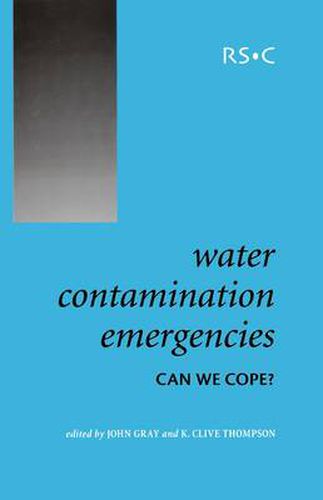Readings Newsletter
Become a Readings Member to make your shopping experience even easier.
Sign in or sign up for free!
You’re not far away from qualifying for FREE standard shipping within Australia
You’ve qualified for FREE standard shipping within Australia
The cart is loading…






Contamination of water supplies, whether by chemical, biological or radioactive agents, requires a rapid and effective response in order to reduce or avoid impact on the environment or consumers. Using seven major incident case studies (including the Milwaukee Cryptosporidium incident, Chernobyl and the UK Foot and Mouth outbreak), Water Contamination Emergencies looks at the complete handling of emergency incidents relating to water contamination emergencies. With contributions from experts involved in real life international incidents, the book also looks at: monitoring requirements; trying to prove the absence of contamination; novel approaches to screening analysis; health risks; the importance of efficient communication; the perception of the public; and the international height of alert situation with respect to potential terrorist acts. Anyone involved in water contamination emergencies, whether researchers and professionals in the water or health industries, or government agencies, should welcome this title as a review of lessons learnt in the past and as an identification of ways in which to improve response in the future.
$9.00 standard shipping within Australia
FREE standard shipping within Australia for orders over $100.00
Express & International shipping calculated at checkout
Contamination of water supplies, whether by chemical, biological or radioactive agents, requires a rapid and effective response in order to reduce or avoid impact on the environment or consumers. Using seven major incident case studies (including the Milwaukee Cryptosporidium incident, Chernobyl and the UK Foot and Mouth outbreak), Water Contamination Emergencies looks at the complete handling of emergency incidents relating to water contamination emergencies. With contributions from experts involved in real life international incidents, the book also looks at: monitoring requirements; trying to prove the absence of contamination; novel approaches to screening analysis; health risks; the importance of efficient communication; the perception of the public; and the international height of alert situation with respect to potential terrorist acts. Anyone involved in water contamination emergencies, whether researchers and professionals in the water or health industries, or government agencies, should welcome this title as a review of lessons learnt in the past and as an identification of ways in which to improve response in the future.